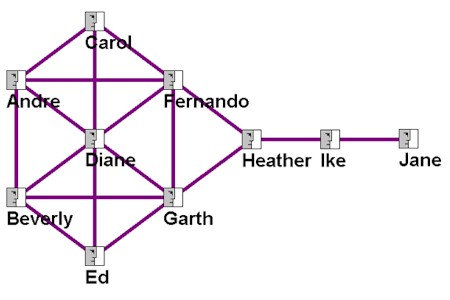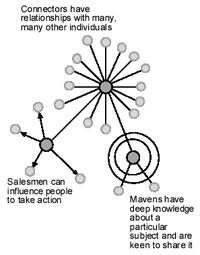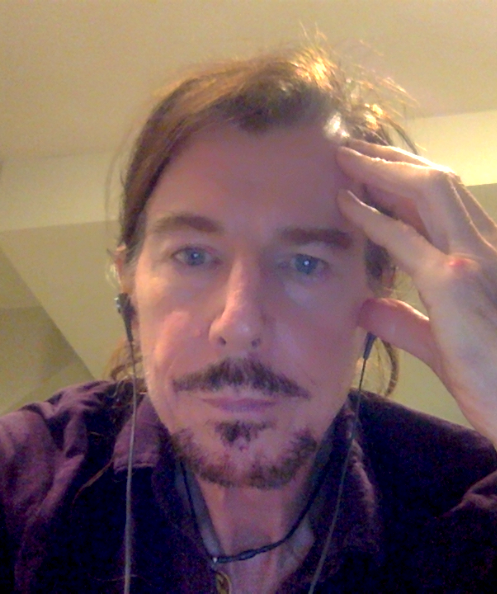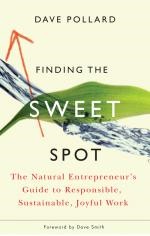 A lot of work has been done in the past couple of years in the field of Social Network Analysis (SNA) — the assessment of the real person-to-person links in and between organizations and groups, as distinct from the ones that you might expect to see from the ‘official’ organization charts. These analyses have already provided some interesting insights — identifying who in organizations are the ‘loners’, where the knowledge-sharing ‘bottlenecks’ and ‘roadblocks’ are, and the types of networks that people tend to form, which can be described (according to SNA Guru and my fellow KM specialist Valdis Krebs, from whose site the illustration above is taken) using attributes like degree centrality (the number of connections), betweenness centrality (the number of connections to the otherwise-disconnected), and closeness centrality (the shortness of the average path to others). This insight can then be applied to other network theories like Malcolm Gladwell’s Tipping Points: Which network nodes indicate the critical communication roles — mavens, connectors and salesmen? (Heather in the illustration above has what Valdis calls a high betweenness centrality, and is likely what Malcolm calls a connector, while Diane could be either a connector or a bottleneck, or both). The next step, then, is to explore this ‘signal loss’: What causes it, and why is it greater in some situations (e.g. when you try to get an e-mail through one filter or intermediary to a celebrity) than in others (e.g. in successful viral marketing, where information spreads like wildfire). A new book entitled The Hidden Power of Social Networks by Rob Cross and Andrew Parker suggests that organizations would be wise to ‘surface’ and support these de facto networks, instead of ignoring them in favour of the formal hierarchical ones. Management can do this, the authors say, by:
To do this effectively, they say your organization needs to look beyond the objective quantitative attributes of network links (the frequency of connections) and survey you and everyone else in the organization to get your assessment of each of the following 16 qualitative attributes for each person you’re linked to
What could you do with this information? Imagine you could recast the SNA map at the top of this article with a second map that showed the perceived quality of information transfer (each way) between you and others in your network, and a third map that showed the perceived degree of trust (each way) between you and others in your network? If the perceptions each way, or between the three maps, were markedly different, this could be startling and potentially very useful knowledge. Unlike the authors of The Hidden Power of Social Networks, however, I think in the hands of management it would be dangerous, disruptive, and perhaps even abusive. But suppose the perceptions of you by others (how ‘well’ you do in each of the 16 qualitative attributes above) was available exclusively and privately to you? This, I believe, could be astonishingly valuable as a self-assessment tool. Recall that Peter Drucker, who is consistently rated as the most universally trusted and respected business adviser of this generation, has argued:
What better way to communicate how well each employee is doing at their job than by giving them a map that shows how well they are perceived to be supporting their networks? Suppose for example you got this map, and it showed that your peers rated you extremely highly, but your boss rated you low. Imagine what eye-opening conversations could result: Does this mean your boss is an idiot, or does it mean you’re doing all this work helping others do their jobs at the perceived cost of getting your own essential work done? And if management perceives it is the latter, are they right or are you just under-appreciated and suboptimally employed, and should you in fact have your job description changed so that helping those people who rate your help so highly becomes your job? As long as management is kept out of this evaluation process, I think this would allow each of us to self-manage our jobs and careers, and hence to become dramatically more effective in our work. It could tell us that we’re doing the wrong job. It could tell us that we’re working for the wrong organization. It could tell us why we’re not getting ahead, why we’re not happy, and what we need to do to turn ourselves around, to fine tune our performance, and to leverage our perceived strengths in the organization. It could employ The Wisdom of Crowds to solve Drucker’s ‘greatest management challenge of this century’. But ironically, and delightfully, it could solve it with no involvement from management at all. |
Navigation
Collapsniks
Albert Bates (US)
Andrew Nikiforuk (CA)
Brutus (US)
Carolyn Baker (US)*
Catherine Ingram (US)
Chris Hedges (US)
Dahr Jamail (US)
Dean Spillane-Walker (US)*
Derrick Jensen (US)
Dougald & Paul (IE/SE)*
Erik Michaels (US)
Gail Tverberg (US)
Guy McPherson (US)
Honest Sorcerer
Janaia & Robin (US)*
Jem Bendell (UK)
Mari Werner
Michael Dowd (US)*
Nate Hagens (US)
Paul Heft (US)*
Post Carbon Inst. (US)
Resilience (US)
Richard Heinberg (US)
Robert Jensen (US)
Roy Scranton (US)
Sam Mitchell (US)
Tim Morgan (UK)
Tim Watkins (UK)
Umair Haque (UK)
William Rees (CA)
XrayMike (AU)
Radical Non-Duality
Tony Parsons
Jim Newman
Tim Cliss
Andreas Müller
Kenneth Madden
Emerson Lim
Nancy Neithercut
Rosemarijn Roes
Frank McCaughey
Clare Cherikoff
Ere Parek, Izzy Cloke, Zabi AmaniEssential Reading
Archive by Category
My Bio, Contact Info, Signature Posts
About the Author (2023)
My Circles
E-mail me
--- My Best 200 Posts, 2003-22 by category, from newest to oldest ---
Collapse Watch:
Hope — On the Balance of Probabilities
The Caste War for the Dregs
Recuperation, Accommodation, Resilience
How Do We Teach the Critical Skills
Collapse Not Apocalypse
Effective Activism
'Making Sense of the World' Reading List
Notes From the Rising Dark
What is Exponential Decay
Collapse: Slowly Then Suddenly
Slouching Towards Bethlehem
Making Sense of Who We Are
What Would Net-Zero Emissions Look Like?
Post Collapse with Michael Dowd (video)
Why Economic Collapse Will Precede Climate Collapse
Being Adaptable: A Reminder List
A Culture of Fear
What Will It Take?
A Future Without Us
Dean Walker Interview (video)
The Mushroom at the End of the World
What Would It Take To Live Sustainably?
The New Political Map (Poster)
Beyond Belief
Complexity and Collapse
Requiem for a Species
Civilization Disease
What a Desolated Earth Looks Like
If We Had a Better Story...
Giving Up on Environmentalism
The Hard Part is Finding People Who Care
Going Vegan
The Dark & Gathering Sameness of the World
The End of Philosophy
A Short History of Progress
The Boiling Frog
Our Culture / Ourselves:
A CoVid-19 Recap
What It Means to be Human
A Culture Built on Wrong Models
Understanding Conservatives
Our Unique Capacity for Hatred
Not Meant to Govern Each Other
The Humanist Trap
Credulous
Amazing What People Get Used To
My Reluctant Misanthropy
The Dawn of Everything
Species Shame
Why Misinformation Doesn't Work
The Lab-Leak Hypothesis
The Right to Die
CoVid-19: Go for Zero
Pollard's Laws
On Caste
The Process of Self-Organization
The Tragic Spread of Misinformation
A Better Way to Work
The Needs of the Moment
Ask Yourself This
What to Believe Now?
Rogue Primate
Conversation & Silence
The Language of Our Eyes
True Story
May I Ask a Question?
Cultural Acedia: When We Can No Longer Care
Useless Advice
Several Short Sentences About Learning
Why I Don't Want to Hear Your Story
A Harvest of Myths
The Qualities of a Great Story
The Trouble With Stories
A Model of Identity & Community
Not Ready to Do What's Needed
A Culture of Dependence
So What's Next
Ten Things to Do When You're Feeling Hopeless
No Use to the World Broken
Living in Another World
Does Language Restrict What We Can Think?
The Value of Conversation Manifesto Nobody Knows Anything
If I Only Had 37 Days
The Only Life We Know
A Long Way Down
No Noble Savages
Figments of Reality
Too Far Ahead
Learning From Nature
The Rogue Animal
How the World Really Works:
Making Sense of Scents
An Age of Wonder
The Truth About Ukraine
Navigating Complexity
The Supply Chain Problem
The Promise of Dialogue
Too Dumb to Take Care of Ourselves
Extinction Capitalism
Homeless
Republicans Slide Into Fascism
All the Things I Was Wrong About
Several Short Sentences About Sharks
How Change Happens
What's the Best Possible Outcome?
The Perpetual Growth Machine
We Make Zero
How Long We've Been Around (graphic)
If You Wanted to Sabotage the Elections
Collective Intelligence & Complexity
Ten Things I Wish I'd Learned Earlier
The Problem With Systems
Against Hope (Video)
The Admission of Necessary Ignorance
Several Short Sentences About Jellyfish
Loren Eiseley, in Verse
A Synopsis of 'Finding the Sweet Spot'
Learning from Indigenous Cultures
The Gift Economy
The Job of the Media
The Wal-Mart Dilemma
The Illusion of the Separate Self, and Free Will:
No Free Will, No Freedom
The Other Side of 'No Me'
This Body Takes Me For a Walk
The Only One Who Really Knew Me
No Free Will — Fightin' Words
The Paradox of the Self
A Radical Non-Duality FAQ
What We Think We Know
Bark Bark Bark Bark Bark Bark Bark
Healing From Ourselves
The Entanglement Hypothesis
Nothing Needs to Happen
Nothing to Say About This
What I Wanted to Believe
A Continuous Reassemblage of Meaning
No Choice But to Misbehave
What's Apparently Happening
A Different Kind of Animal
Happy Now?
This Creature
Did Early Humans Have Selves?
Nothing On Offer Here
Even Simpler and More Hopeless Than That
Glimpses
How Our Bodies Sense the World
Fragments
What Happens in Vagus
We Have No Choice
Never Comfortable in the Skin of Self
Letting Go of the Story of Me
All There Is, Is This
A Theory of No Mind
Creative Works:
Mindful Wanderings (Reflections) (Archive)
A Prayer to No One
Frogs' Hollow (Short Story)
We Do What We Do (Poem)
Negative Assertions (Poem)
Reminder (Short Story)
A Canadian Sorry (Satire)
Under No Illusions (Short Story)
The Ever-Stranger (Poem)
The Fortune Teller (Short Story)
Non-Duality Dude (Play)
Your Self: An Owner's Manual (Satire)
All the Things I Thought I Knew (Short Story)
On the Shoulders of Giants (Short Story)
Improv (Poem)
Calling the Cage Freedom (Short Story)
Rune (Poem)
Only This (Poem)
The Other Extinction (Short Story)
Invisible (Poem)
Disruption (Short Story)
A Thought-Less Experiment (Poem)
Speaking Grosbeak (Short Story)
The Only Way There (Short Story)
The Wild Man (Short Story)
Flywheel (Short Story)
The Opposite of Presence (Satire)
How to Make Love Last (Poem)
The Horses' Bodies (Poem)
Enough (Lament)
Distracted (Short Story)
Worse, Still (Poem)
Conjurer (Satire)
A Conversation (Short Story)
Farewell to Albion (Poem)
My Other Sites

 The advantage of the data that is used to construct SNA maps like the one above is their objectivity: Generally, this data is highly quantitative, and is collected by polling e-mails or telephone calls or other evidence of the presence of links. Even the terms ‘strong’ and ‘weak’ ties are defined in ways that are objectively verifiable — they refer simply to the number of degrees of separation between the nodes. The popular expression ‘the strength of weak ties’ (the fact that most of the value in your network tends to come from people two or more degrees of separation away) is a bit of a misnomer: It might be more accurately (if unpoetically) called ‘the power of large numbers of more remote ties’. I have
The advantage of the data that is used to construct SNA maps like the one above is their objectivity: Generally, this data is highly quantitative, and is collected by polling e-mails or telephone calls or other evidence of the presence of links. Even the terms ‘strong’ and ‘weak’ ties are defined in ways that are objectively verifiable — they refer simply to the number of degrees of separation between the nodes. The popular expression ‘the strength of weak ties’ (the fact that most of the value in your network tends to come from people two or more degrees of separation away) is a bit of a misnomer: It might be more accurately (if unpoetically) called ‘the power of large numbers of more remote ties’. I have 



Great summary and insights Dave! Thanks for the links. Here is a direct application of SNA and Gladwell’s Mavens and Connectors …and it is all about you bloggers! ;-)http://www.orgnet.com/NEOBlogosphere2005.pdfAlso, I have lot more comments on your post, would you be interested in doing a podcast with me on this? It is too much to type… especially in a small box like this!Valdis
Thanks, Valdis. Sure, I’m up for a podcast.
I have a database of more than 13,000 contacts who I have been connection for more than 12 years in an effort to create a community of people who’s collective efforts results in more youth born in poverty entering jobs and careers by age 25.I view network analysis tools as a way to help people understand who the people in this network are, how they are connected, and how we have been working with them. At the same time, it’s an opportunity to look for voids in the network, and for others to find a role.Thus, I’m looking for interns / volunteers who would apply their knowledge of SNA to help me map this network. I think it has huge potential. Thanks for posting this information.
There is no substitute for hands-on management from a management team. It’s also unlikely SNA information would be made available to any one outside that management team.Apart from mapping a gossip mill – who talks to who and who likes who – what is the purpose of SNA and how exactly will it achieve it?